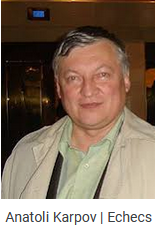A small problem with the Master's computer did not prevent the session from taking place.
All the usual hairy men were there to tackle the positions set by the Master.
A very nice work, as you can see by reading the report below
Master's words

"One should never risk a joke, even the sweetest and most permissible one, except with polite or witty people. Fools are always ready to get angry and to believe that they are despised" (La Bruyère).
"When I wrote The Zero Degree of Writing, I was not sure of myself. I was afraid of being stupid. That's why I wanted to be a bit hermetic, so that no one would see that I was" (R. Barthes, told by J.-Ch. Pichon, the same RB, a hairdressing expert, who also says: "there are two categories of women: those who shave you, and those who mow you"). Strange how this quote (I mean the first one!) makes me think of the composers of modern studies... See below, in the same spirit, Pervakov's comment.
A remark inspired by a nonsense (one more) read lately. Chess has never been for me a game and, like Stefan Zweig, I find this term insulting. However, if it always annoyed me concerning our art-science-sport, I never felt the same irritation for the one of "player". Is it because it evokes in Chess, in opposition to the "problemist" one, a greater realism? And more generally, even without thinking of Dostoyevsky's book, the term "player" seems to me to present more nobility: somebody who risks a lot, if not his life, who goes to the coal, who gets wet, almost a warrior. Whereas "game" (even more than "play") evokes fun. But I have used this term, especially in the form of "noble game", as it does suit a marquis... !
Moravec's pawn endgame is all in his white 2nd move. Then a White Bishop comes four times in a row on the same square, to then occupy insolently... the square best controlled by Black. Finally the best choice: we lose the rook, but not the game. Because the White King controls the RN+CN pair.
"Since the 6-unit tablebases are available on the internet [summer 2006, AV's note] I have refused on principle to use them. Any creative person will understand me: you want to find something yourself, from start to finish. But, seeing the lack of talent modern composers show in using these tablebases, I decided to use them six months ago" (O. Pervakov, August 2017). We give a rather pleasing study by the aforementioned OP world champion, long before these words, and then two more (from the same period) in exercises for January.
A Kortchnoi endgame is almost always interesting, but this one is Homeric. The great Viktor is better, then winning, then equal, then... losing (!), again equal, then losing again, finally a draw. And his analyses are remarkable, at a time when computer assistance was just threatening to exist: a few mistakes, of course, but how many leads guiding us through the sifting by the analytical monster... Moreover, we see in the 51st move an interesting reply to a famous article http://www.france-echecs.com/article.php?art=20061225181612247


The Bishop fight against two linked pawns was dealt with a year ago, on 8 November 2016. This time the pawns are three and it's not sad. As Han noted, White makes a foreground to foreground (!) to end up with a phenomenal ZZ, as there is only one square on the board where the Bishop has to be to get the draw.
The game of the day is 35 years old, but its opening does not go out of fashion. We develop it further, as some walkers have reproached us for not giving enough importance to this phase of the game. The way the black position suddenly collapses is surprising. Especially when you consider who Black was led by, a player who was a candidate for the world championship the following year.
A few days ago, the World Problem Solving Champion (niech żyje Polska!) beat our ex- (and vice-) French "normal" Chess Champion. An occasion for pseudo-pedagogues, federal officials and journalists of our "beautiful country", who unceasingly boycott artistic chess, to make amends? One can always dream. Na zdrowje!
Fairy: the climax is a masterpiece of our MC (Master of Chess) which looks very much like his other masterpiece of Jurmala given in http://www.france-echecs.com/article.php?art=20080831123235557 (see 10/09/2008) and thus of the same year.


Training. After the ten or so non-trivial 2#, a 3# showing us the Swiss Retro Gifted in an unusual role, then a non-boring cyclic and a magnificent paradox given at the 2016 Polish Championship. In 4#, two world champions at work; one was offered at the 1990 world championship, the other, 40 years later, shows us second moves that... are also third moves. Then, in a more restful way, two 60-year-old French problems: reciprocal interceptions of black pieces in the style of Pierre Drumare, then a focal play of the best taste. Finally, a longer problem, also French, to which I had the pleasure of giving the first prize this year. I inexplicably forgot to remove the solution.
The 2# helpmate is very tactical, the 3# helpmate (with twin) more strategic. Then two 4# helpmates. The first one offers us model mats. The second, a Romanian masterpiece, is strangely always misquoted: half of the problem is cut out by forgetting the twin. We finish with three selfmates. None of them are difficult, although the second was given at the Finnish championship and the third at this year's Lithuanian championship. The first one has a twin, which is common in helpmate but rare in selfmate.
Have a good time. See you in January if Deus vult. Good end of the year.
Comments
1 Alain On Monday, december 25, 2017
Joyeux Noël !